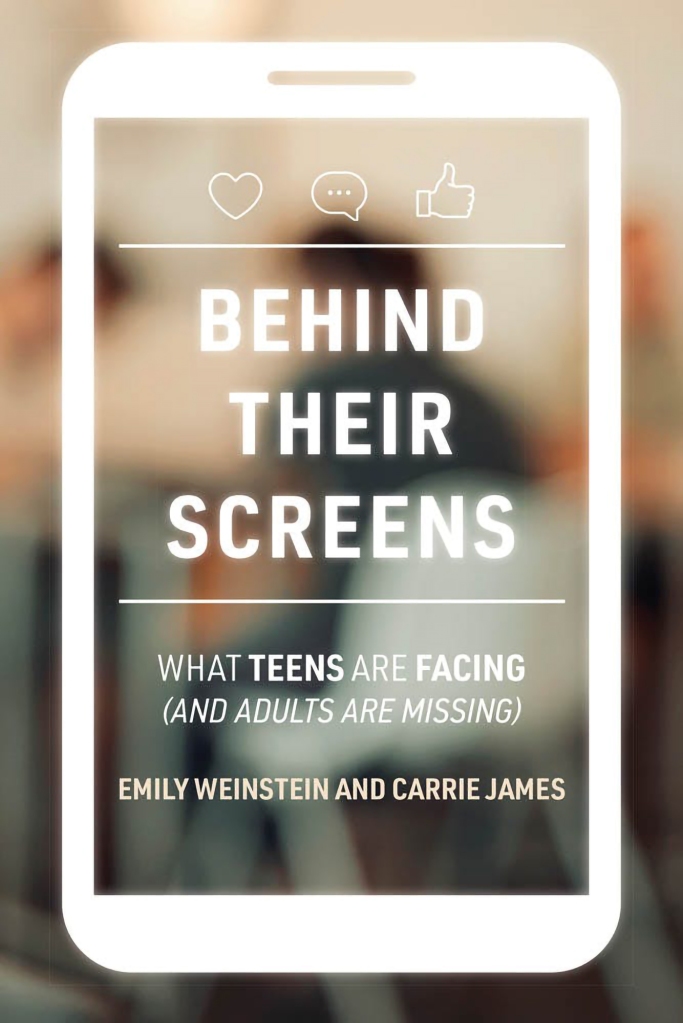Why teen boys and girls will sext no matter what you tell them
One in three teenagers have received a sext — and this number is only growing, according to a new book. “It just puts you in an awkward situation. You always have to be paranoid in these circumstances,” a 12-year old explained in “Behind Their Screens: What Teens Are Facing (And Adults Are Missing)” (MIT Press), out now. “If you’re pressured but don’t want to, you might risk having someone as a friend or not,” said a 13-year-old quoted in the book.
Parents might prefer to bury their heads in the sand or take away phones or lock their children in their rooms rather than face the grim reality that technology plays in teen sexuality.
Harvard sociologists Emily Weinstein and Carrie James have been collecting data on the brave new world of networked lives of teens over the past five years for Harvard’s Digital Dilemmas project. They’ve surveyed and interviewed more than 3,000 teens and preteens, ages 12-18, all over the country to identify the ways screens and smartphones influence behavior.
All that data provides a necessary reality check for parents who rely on “fatalistic tech blaming” or an unrealistic “just say ‘no’” approach. When parents resort to “never sext!” lectures, parents “slip into a digital-age version of abstinence-only education, leaving teens without sufficient information to support complex, real-world decision making,” Weinstein and James write.
As the Journal of Adolescent Health put it in 2019: “Adults often ask what can be told to youth to completely stop them from sexting. The short answer is probably nothing.”
The first step is coming to terms with the reasons they do it in the first place. “When we ignore the reasons teen sext, we misunderstand the calculus of their decision-making,” Weinstein and James write.
When sexts are consensual, the reasons are straightforward: Kids send them because it “feels pleasurable and exciting,” or they “hope to impress someone they like” or they want to “deepen an existing relationship.”
With so much of teen life online, what was once considered “deviant a decade ago,” now has trended “towards normalization among teens and young adults. It’s likely the pandemic hastened this shift too,” they write, as recreational screen time doubled for teens during the pandemic, according to a 2021 study.
Consensual sexting, in other words, is an ingrained part of teen hook-up culture. Scare tactics don’t work, they argue. Weinstein and James gathered troves of statements from teens and preteens who are “patently aware” of the risks they face.
“Once u send it, everyone can see it,” one teen said.

“The pictures can go viral and that would be scary and embarrassing,” another said.
“It will be on the internet forever so it could mess up my life later on.”
Many are even aware that there could be legal ramifications for both sender and receiver. In New York, sending nudes between minors can result in felony child pornography charges, but the state also offers a diversion program. It’s often “up to the discretion of the investigating officers and the district attorney,” the authors write.
Still, teens sext despite the risks. Blame the brain. Areas of cognition dealing with decision-making are slow to develop compared to the emotional and arousal systems that are in overdrive during adolescence. Teens are also more susceptible to the “personal fable” fallacy, where people believe they are too special or unique for bad things to happen to them. Add that together, and you have a kid primed to make some bad decisions.

For parents, the key is to help teens distinguish between consensual and nonconsensual sexts. Once a sext is forwarded — which about 7% of boys and girls have admitted to doing — it is no longer consensual.
Nonconsensual sexting is a spectrum. Some girls (and most of those pressured are female) might not be comfortable declining a request for fear of losing a friend or a romantic interest. One study of 800 middle-school students in relationships showed that one in eight were pressured to send sexual messages or photos to a partner.
An eleven-year-old described the situation she faced: “I don’t want to feel pressured into doing something that I know is not right.”
On the other end of the spectrum are the boys (and again, research shows that males are often the aggressors in nonconsensual text exchanges) who use outright harassment and even violence. Several girls spoke about the rampant intimidation: “When boys get rejected, they turn into the most hostile, violent people you’ve ever known. I’ve known girls who will get bottles thrown at their heads for rejecting somebody. I’ve known girls who get cussed out and exposed on social media and get, like, the screenshot of their chat exposed.”

“They always try to blackmail you into sending and it’s just so annoying,” said one girl.
But girls have developed systems to safeguard themselves. They crop their heads out of shots and clear backgrounds of any identifying details. Savvy teens also turn off location settings, or apply a watermark with the recipient’s name so that the leak can be traced to a specific person. Word of mouth is a weapon often deployed as girls share stories of “creepy” or “sketchy” guys that others should avoid interacting with online.
Weinstein and James talked to girls who had found body doubles online and presented the pictures as their own. Some would take it a step further and screenshot the picture in the search results and send that screenshot to a few close friends. If anything ever leaked, they had ensured full deniability.
In the end, most teens reiterated how “ignorant” and “not realistic” it is for parents to say, “just don’t text.”
“Girls especially want us to appreciate the no-win situation that can leave them feeling trapped. They want parents of boys to emphasize the unacceptability of asking girls for nudes,” the authors write.
As one teen said, “Why would [someone] send around somebody’s pictures? Why would you do that? Because that is, I think, a greater evil.”
Read the full article Here


